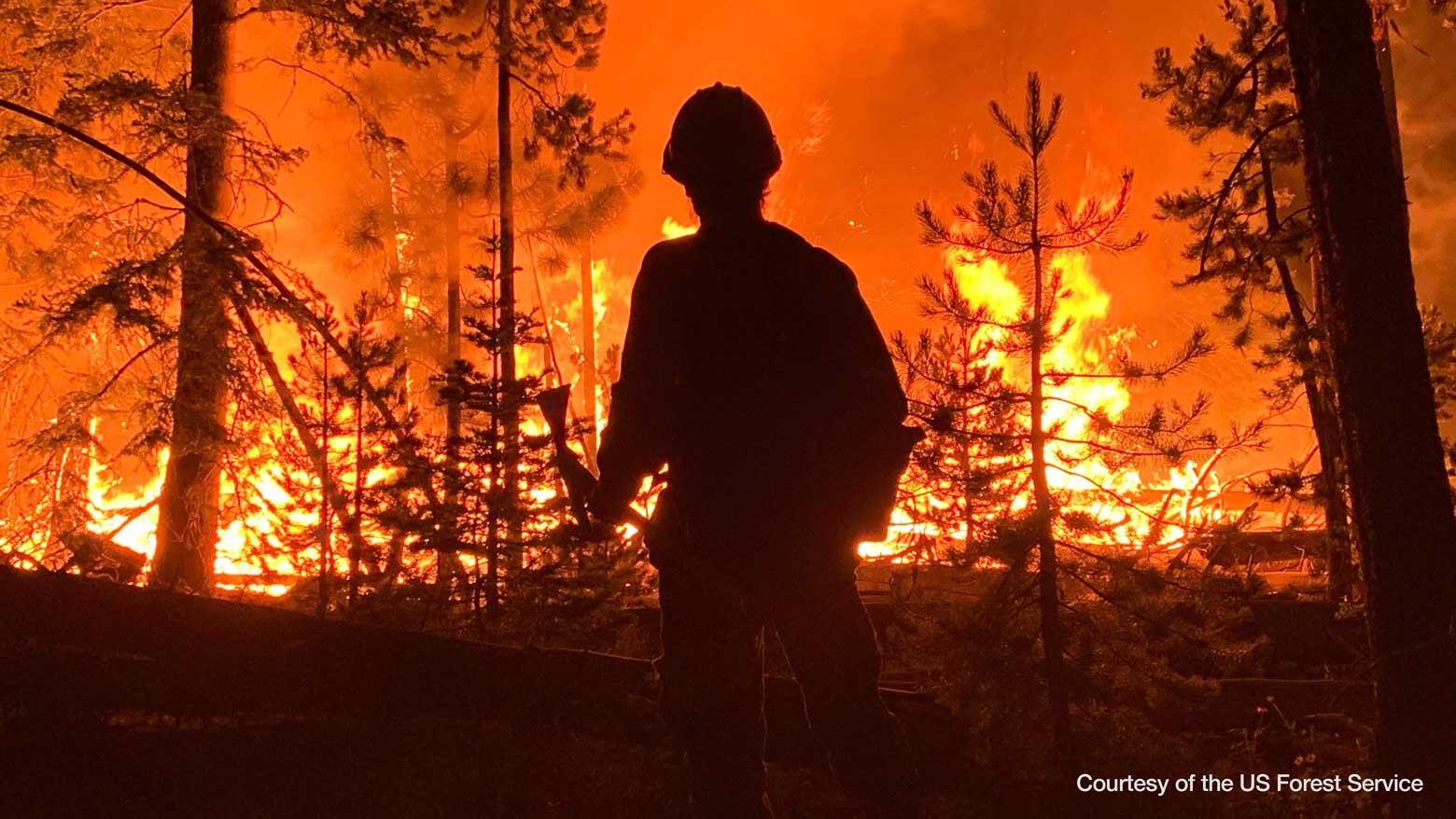On Sunday, July 18, a social media post alerted me that a fire was burning in my hometown of Medford, Oregon, and I immediately called my father to make sure everything was OK. Luckily, the small brush fire was already contained, and no one was harmed. I felt a rush of relief; good news about fires during the summer is rare.
Just last year, a brushfire ignited roughly a dozen miles south of Medford and quickly spread to the nearby towns of Phoenix and Talent. Dozens of wildfires were burning throughout Oregon and state resources were spread thin, so local fire crews were forced to fight the fire without any reinforcements. The fire burned around 2,800 buildings, largely destroying two towns and leaving thousands homeless.
Unfortunately, this year's fire season is shaping up to be just as bad. On July 20, Oregon Governor Kate Brown announced at least nine large fires were burning across the state. Currently, the largest wildfire in the US is Oregon's Bootleg Fire; burning just two hours away from my hometown, it has already consumed more than 413,000 acres and is only 53% contained.
After a warm, dry winter that brought less precipitation than expected, Oregon's fire season started early this year and will likely get worse as summer continues. But Oregon isn't an outlier; nearly all of the American west looks the same. From British Columbia to Southern California, the summer has brought a cornucopia of extreme climate emergencies to the west coast of North America.
During the last week of June, most of the Pacific Northwest saw extreme heatwaves that shattered previous records. In Portland, Oregon, temperatures reached 46.7 degrees Celsius; on June 27, the city's public transit authority was forced to cancel light rail and streetcar service when power cables literally melted in the heat. That same day, the small town of Lytton in British Columbia, Canada, broke national records for the third day in a row when temperatures rose to 49.6 degrees Celsius. A sudden wildfire destroyed more than 90% of the town shortly after.
Acute heat waves are only one aspect of larger warming problem. According to US Drought Monitor, as of July 20, 85.7% of the US west coast was experiencing "severe" to "exceptional" drought. Water levels at Lake Mead, the reservoir created by the Hoover Dam, have plummeted to their lowest level since the dam was built in the 1930s. A vital source of water and electricity for much of the southwest, Lake Mead may soon reach such a critical level that the federal government will be forced to declare a water shortage at the reservoir for the first time in history.
At Lake Oroville, a major reservoir in California, water levels have dropped so low that officials may have to shut down the nearby hydroelectric power plant — a significant loss of generation capacity in the middle of the state's highest season of demand.
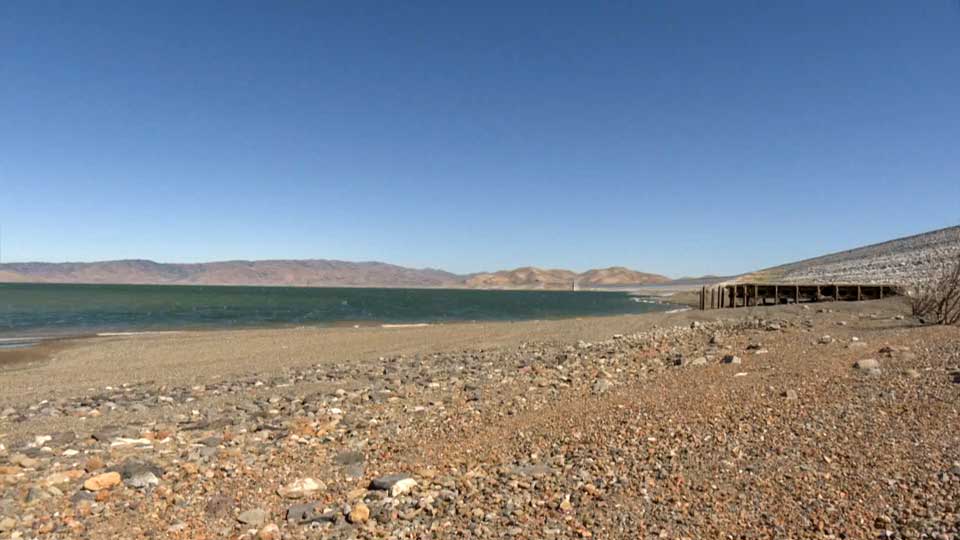
The startling lack of water is already affecting lives throughout the region. California's Central Valley produces nearly one third of the fruits and vegetables consumed in the US, and a significant share of the global supply of certain crops like almonds or pistachios. But farmers in the Central Valley have seen their water allotments for irrigation cut by 20% or more this year, forcing many to make difficult decisions about their businesses.
Christine Gemperle, a second-generation almond farmer, decided to let around one third of her trees go dry this season due to the lack of water. The trees in the orchard she fallowed were nearing the end of their productive life and required more water to produce a crop than younger trees; rather than risk insufficient irrigation for the whole orchard, she instead chose to remove the older trees a couple years ahead of schedule. Before planting new trees in this orchard, Christine plans to install an ultra-efficient irrigation system that will hopefully reduce her water needs in the future.
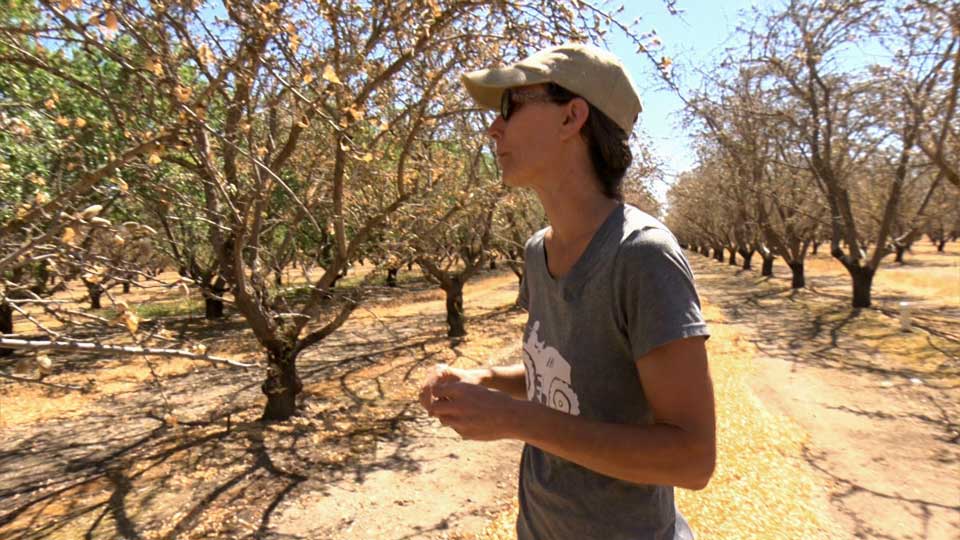
Daniel Bays, who operate hundreds of acres of farmland throughout the valley, said low water allocations this year forced him to not plant anything in a large 65-acre stretch of land. He had originally planned to plant lima beans, but after his local water district couldn't guarantee that he would receive any water, he simply decided to weed and maintain the field in hopes next year will be different. These decisions cut deeply into the farm's revenue and threaten the livelihood of all the employees.
"We try not to let guys go," he explained. "Times are tough, but we try to take care of them, and firing people or cutting jobs is kind of our last resort."
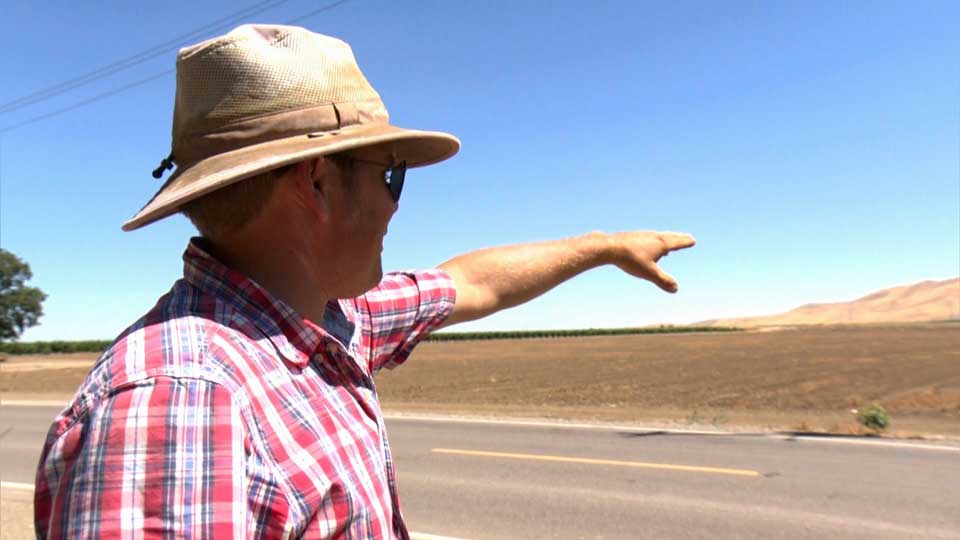
It's unclear if next year will be much better. Ron Macedo, owner of RAM Farms in Turlock, California, said that while his water allocation was cut by 25% this season, irrigation from the local Don Pedro reservoir could be cut by almost two thirds depending on what happens over the next eight months.
"If it doesn't rain over the winter, it will be devastating next year," he said.
Driving around the Central Valley, it's clear that water scarcity is hurting farmers and ranchers. Dry rows of almond trees and wide expanses of arid, dusty earth are common sights.
"Farmers are at ground zero: we feel it first," Gemperle told me. "When we don't have water because of climate change, we're the ones who get our water turned off first. If you live in a city, the tap will keep flowing until the bitter end. But farms will have been dried up way before that happens."
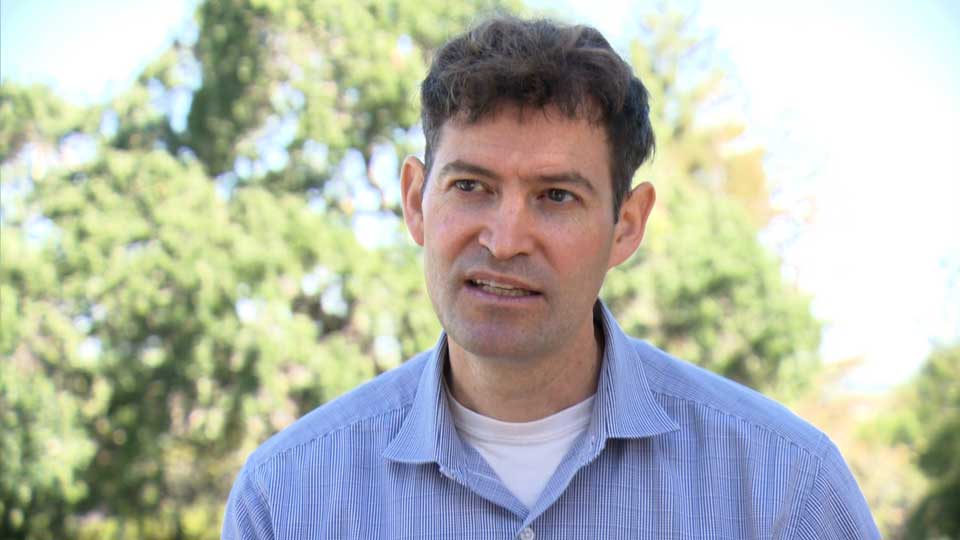
While the West Coast has always experienced periods of drought, rapid warming has fundamentally changed the region's climate and made extreme weather events more likely. Dr. Noah Diffenbaugh, a professor of Earth Systems Science at Stanford University, explained that low levels of precipitation coinciding with abnormally warm conditions has historically doubled the chance of severe drought in California. In previous years, these conditions for would align only occasionally. But not anymore.
"[W]hat we found is that because California is warming, it's now sufficiently warm that essentially all of our years are warm years," he explained. "So, when we get that low precipitation, we're pretty much guaranteed to have the warm temperatures that produce drought. Our research shows the odds of those conditions coming together have doubled as a result of global warming."
While private companies and the federal government have declared lofty goals to drastically cut carbon emissions and transition to more sustainable forms of energy and economic activity, concrete steps and legislative actions are few and far between.
Looking out the windows of the NHK office in Manhattan, I see a burnt orange sun sinking through a ghostly, gray haze. A headline in The New York Times informs me this isn't just normal fog or air pollution; it's smoke from the wildfires burning across the West Coast. Watching the light of this bleeding sun filter through the smoke, I wonder what the future holds for people like Gemperle facing the vanguard of a rapidly changing climate. I'm skeptical of the will to effect meaningful change among US politicians. But after talking with her and the other farmers and ranchers who feed millions of people around the world, I feel a twinge of hope. Before we left her orchard, she had a final word about facing climate change:
"We're going to learn a lot, and we're going to change a lot. We have to if we're going to survive. That's it. We've got to change right along with climate change."
It's not much comfort, but I at least hold on to the hope that if she can make the difficult decision to let the old die and embrace the new, maybe the rest of us can, too.
